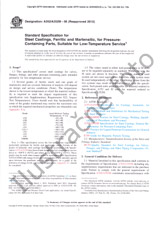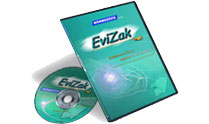Potrebujeme váš súhlas na využitie jednotlivých dát, aby sa vám okrem iného mohli ukazovať informácie týkajúce sa vašich záujmov. Súhlas udelíte kliknutím na tlačidlo „OK“.
ASTM D7116-16(2021)
Standard Specification for Joint Sealants, Hot Applied, Jet Fuel Resistant Types, for Portland Cement Concrete Pavements
NORMA vydaná dňa 1.5.2021
Informácie o norme:
Označenie normy: ASTM D7116-16(2021)
Dátum vydania normy: 1.5.2021
Kód tovaru: NS-1024064
Počet strán: 4
Približná hmotnosť: 12 g (0.03 libier)
Krajina: Americká technická norma
Kategória: Technické normy ASTM
Kategórie - podobné normy:
Anotácia textu normy ASTM D7116-16(2021) :
This specification covers joint and crack sealants of the hot applied, jet fuel resistant type intended for use in sealing joints and cracks in Portland cement concrete in areas that are subject to fuel spillage. Three types of joint sealants are presented: type I - joint sealant which is resilient and capable of maintaining an effective seal in hot to moderate climates, type II - joint sealant capable of maintaining an effective seal in hot to moderate climates, and type III - joint sealant capable of maintaining an effective seal in most climates experiencing moderate to cold temperatures. The specimen conditioning, cone penetration, aged cone penetration retention, and softening point shall be tested to meet the requirements prescribed. Non-immersed bond, water immersed bond, fuel immersed bond, resilience, and oven aged resilience shall be tested to meet the requirements prescribed. The tensile adhesion, artificial weathering, and flexibility of the sealant shall be tested to meet the requirements prescribed.
Keywords:
hot applied, jet fuel resistant, joint sealant,, ICS Number Code 91.100.50 (Binders. Sealing materials),93.120 (Construction of airports)
Doplňujúce informácie
| 1. Scope | ||||||||||||
|
1.1?This specification covers joint and crack sealants of the hot-applied type intended for use in sealing joints and cracks in portland cement concrete in areas that are subject to fuel spillage. 1.2?The values stated in SI units are to be regarded as the standard. 1.3?This standard does not purport to address all of the safety concerns, if any, associated with its use. It is the responsibility of the user of this standard to establish appropriate safety, health, and environmental practices and determine the applicability of regulatory limitations prior to use. 1.4?This international standard was developed in accordance with internationally recognized principles on standardization established in the Decision on Principles for the Development of International Standards, Guides and Recommendations issued by the World Trade Organization Technical Barriers to Trade (TBT) Committee. |
||||||||||||
| 2. Referenced Documents | ||||||||||||
|
Odporúčame:
EviZak - všetky zákony vrátane ich evidencie na jednom mieste
Poskytovanie aktuálnych informácií o legislatívnych predpisoch vyhlásených v Zbierke zákonov od roku 1945.
Aktualizácia 2x v mesiaci !
Chcete vedieť viac informácii ? Pozrite sa na túto stránku.




 Cookies
Cookies
